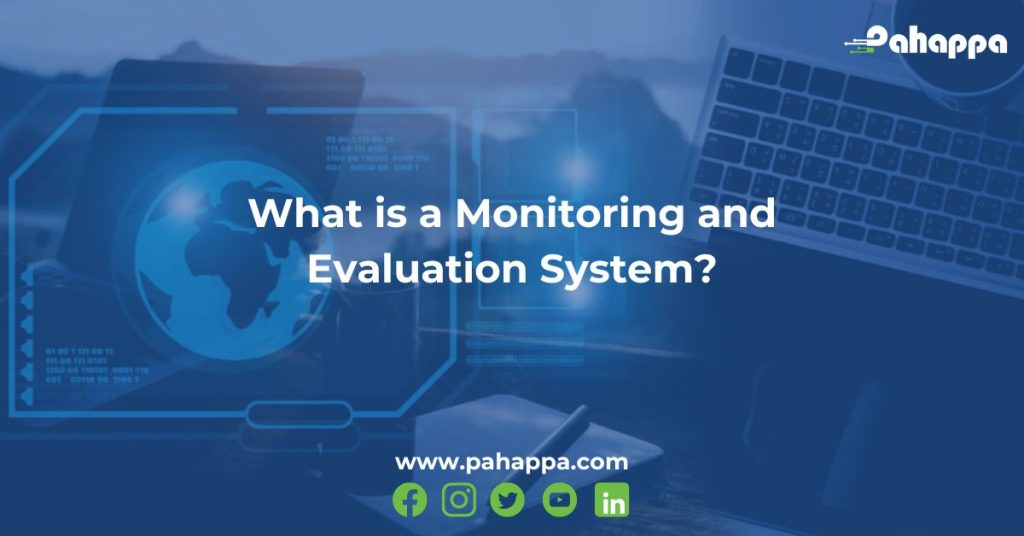A Monitoring and Evaluation (M&E) system is an essential framework that helps organizations track their progress, measure outcomes, and assess the impact of their initiatives. With an M&E System, organizations can track data entered from each initiative or project and create outstanding and credible reports of their outcome. In the NGO sector, for example, where resources are often limited and the need for accountability and transparency is high, an effective M&E system is crucial. This system not only ensures that projects are on track but also helps in demonstrating success to stakeholders and identifying areas for improvement. So if you are an NGO seeking to increase your transparency and data accuracy, then this article might be for you.
Understanding Monitoring and Evaluation
Monitoring is the ongoing process of collecting and analyzing data to check the progress of a project or program. It involves regular tracking of activities and outputs against established benchmarks or performance indicators. Data collectors representing different initiatives of an organization input data into a centralized system.
Evaluation, on the other hand, is a systematic and objective assessment of a completed project or program, or a phase of it. Evaluation examines the relevance, effectiveness, efficiency, impact, and sustainability of the interventions and strategies employed. The reporting and data collection methods used determine the evaluation aspect. This is how data is assessed and what results and conclusions made always determine the relevance of the project.
Components of an M&E System
- Clear Objectives and Indicators: An effective M&E system begins with clear, measurable objectives and indicators. These indicators are specific, quantifiable metrics that help in assessing the progress and impact of the project. For instance, an NGO focused on education might set an objective to improve literacy rates among children in a specific community, with indicators such as the number of children who can read at certain class levels.
- Data Collection Methods: Reliable data collection methods are essential. These can include surveys, interviews, focus group discussions, and direct observations. For example, an NGO working on healthcare might use patient records, health surveys, and community feedback to gather data.
- Data Management: Efficient data management systems ensure that collected data is stored, processed, and analyzed effectively. Many NGOs use specialized software to manage their data, ensuring that it is accessible and usable for reporting and decision-making.
- Regular Reporting: Regular reporting mechanisms keep stakeholders informed about progress and challenges. This can include monthly or quarterly reports, dashboards, and newsletters. For instance, an NGO working on environmental conservation might produce quarterly reports detailing the number of trees planted and changes in biodiversity in the project area.
- Evaluation and Feedback: Periodic evaluations provide deep insights into the effectiveness and impact of the project. These evaluations can be mid-term, end-term, or ex-post (after the project has ended). Feedback from these evaluations helps in refining strategies and improving future projects.
Importance in the NGO Sector
For NGOs, an M&E system is not just a tool for accountability but a pathway to continuous improvement and success. Here are some ways in which M&E systems are particularly beneficial in the NGO sector:
- Accountability and Transparency: Donors and stakeholders require assurance that their funds are being used effectively. An M&E system provides the evidence needed to demonstrate this. For example, an NGO receiving grants for clean water initiatives can use M&E data to show how many wells have been built and the impact on community health.
- Learning and Improvement: By systematically analyzing what works and what doesn’t, NGOs can learn from their experiences and improve their strategies. An NGO focused on women’s empowerment might find through M&E that vocational training is more effective than microfinance in improving women’s income levels, and adjust their programs accordingly.
- Resource Allocation: M&E helps NGOs make informed decisions about where to allocate resources. For instance, if an NGO finds that certain regions have higher success rates with particular interventions, they can prioritize those areas.
- Enhanced Impact: Ultimately, the goal of any NGO is to create a positive impact. M&E systems help ensure that efforts are directed towards achieving the greatest possible impact. For example, an NGO working in disaster relief can use M&E data to improve their response times and effectiveness in future emergencies.
Real-World Example: Education NGO
Consider the example of MEMPROW, an NGO focused on providing skill to empower young women. The NGO sets up an M&E system with the following components:
- Objectives and Indicators: Increase skill rates by 20% in two years; indicators include the number of children who pass literacy tests.
- Data Collection: Monthly surveys of the young women’s progress, teacher assessments, and community feedback.
- Data Management: Use of an online database to track young women’s performance and attendance.
- Reporting: Quarterly reports to donors and stakeholders highlighting progress, challenges, and success stories.
- Evaluation and Feedback: Mid-term evaluation to assess progress and make necessary adjustments; final evaluation to measure overall impact and lessons learned.
Through this M&E system, the NGO can demonstrate to donors that their interventions are effective, identify any gaps or issues early on, and continuously improve their programs to better serve the community.
Conclusion
A Monitoring and Evaluation system is a vital component for NGOs, enabling them to track progress, demonstrate accountability, and enhance the impact of their initiatives. By setting clear objectives, collecting and managing data effectively, and using evaluations to inform future actions, NGOs can ensure that they are making a real difference in the communities they serve. If you are an NGO looking to get the most out of your projects and initiatives, consider a Monitoring and Evaluation System by clicking here to learn more.






